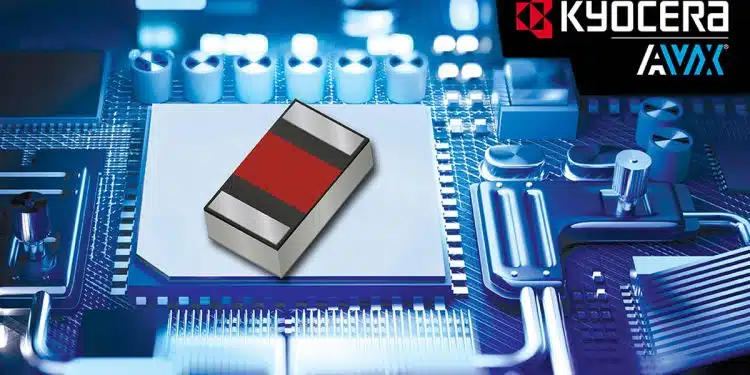With the release of the new 0201 Accu-Guard II Low-Current Fuses rated for 28mA to 200mA, KYOCERA AVX became the world’s first and currently only supplier of 0201 fuses rated for less than 150mA.
KYOCERA AVX, a leading global manufacturer of advanced electronic components engineered to accelerate technological innovation and build a better future, extended its Accu-Guard II Low-Current Fuses with new 0201 case sizes that deliver the industry’s lowest current ratings.
Accu-Guard II Low-Current Fuses utilize thin-film technology to achieve precise control over the components’ physical and electrical characteristics — beyond what’s possible with standard fuse technologies — and deliver extremely low current ratings in compact 0603, 0402, and new 0201 packages. In fact, with this latest release, KYOCERA AVX became the world’s first and currently only provider of low-current 0201 fuses rated for less than 150mA.
The new 0201 Accu-Guard II Low-Current Fuses offer current ratings extending from 28mA to 200mA and deliver valuable space savings and fast-acting, high-reliability circuit protection in industrial, energy, utilities, telecommunications, medical, and consumer electronics applications equipped with small, high-density PCBs. These single-use fuses also have a 50A interrupt rating and are additionally rated for 32V, >1MΩ post-fusing resistance, and operating temperatures extending from -55°C to +125°C. Other features include lead-free nickel-solder-coated (Sn100) land grid array (LGA) terminations, compliance with ISO 9001, IATF, RoHS, and UL/cUL regulations, and tape and reel packaging for automated processing.
Ideal applications for the new 0201 Accu-Guard II Low-Current Fuses include battery management systems, battery chargers, rechargeable battery packs, hard disk drives, handheld two-way radios, LCD screens, base stations, computers, tablets, smartphones, medical instrumentation, home appliances, and digital cameras and video cameras. They are also well suited for use in harsh and potentially explosive ATEX environment applications, including gas distribution centers.
“Steady cross-market demand for small, safe, and multifunctional electronic products is driving OEMs to develop circuits equipped with high component densities and sensitive to both heat and DC over-current conditions,” said Amir Kopelman, Technical Services Manager at KYOCERA AVX. “We developed our new 0201 Accu-Guard II Low-Current Fuses — which exhibit low resistance, low voltage drop, and the lowest current ratings of any 0201 fuse available on the market and deliver reliable, fast-acting circuit protection — with these small crowded circuits in mind, and we are very excited for design engineers facing these common challenges to try them out.”






























